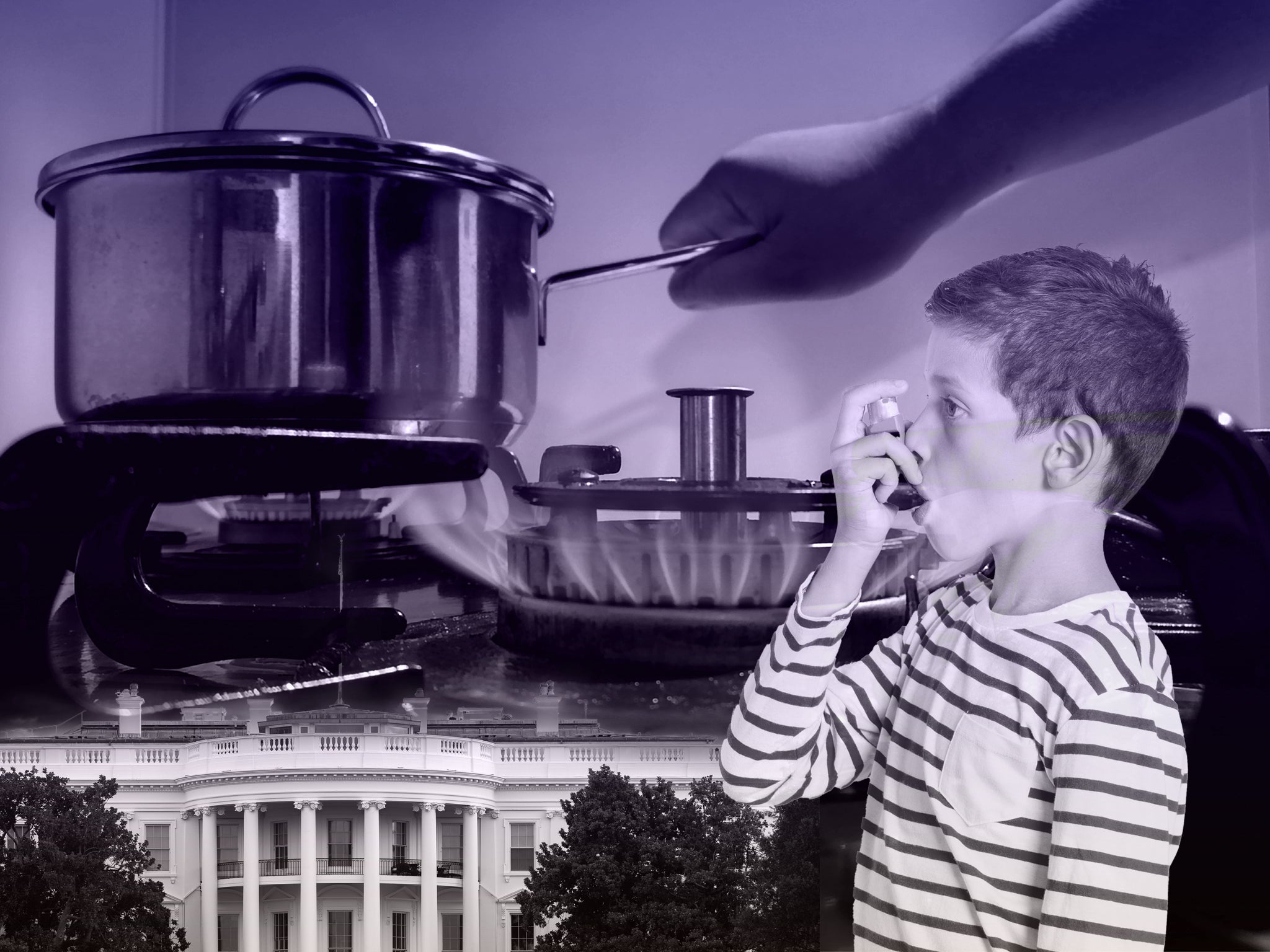I monitored the pollution from my gas stove and was shocked at what I found
Initially I was skeptical of the panic over gas stoves. Like many, I didn’t see a problem with using a little natural gas to cook meals. But as I read studies, ran my own experiments and interviewed indoor air pollution experts, my skepticism faded.

In recent months, many cities and states have passed laws to prevent gas stoves in new buildings. Last week, a federal agency announced they would consider regulations on the sale of gas stoves. The announcement came after a group of researchers found that 650,000 childhood asthma cases can be attributed to gas stoves.
Initially I was skeptical of the panic over gas stoves. Like many, I didn’t see a problem with using a little natural gas to cook meals. But as I read studies, ran my own experiments and interviewed indoor air pollution experts, my skepticism faded.
Public health experts have known about the risks of cooking with natural gas for more than 50 years. Gas stoves produce nitrogen dioxide (NO2), a pollutant that is harmful to human health at high enough concentrations.
“Nitrogen dioxide irritates your respiratory system,” Josiah Kephart, a researcher who studies indoor air pollution at Drexel University, told me. “As you breathe it in, all of the lining throughout your entire respiratory system gets irritated or inflamed.”
Numerous studies over the years have shown that homes with gas stoves consistently have dangerously high levels of NO2. As a result, children living in a home with a gas stove have a 42 per cent increased risk of asthma.
More recently, a group of researchers found that 12.7 per cent of childhood asthma cases can be attributed to gas stoves.
After spending hours poring over numerous studies on gas stoves and speaking to experts, I decided to put air quality monitors around my house. I wanted to see what my gas stove was actually doing to me in my own home. The answer was much worse than anything I had expected.
The first revelation was perhaps not the most surprising; every time we cooked, NO2 levels in our home spiked to as much as 600 parts per billion (ppb), which is more than six times what the World Health Organization considers safe.
There was one day of the week that NO2 levels didn’t spike, however. Every Tuesday we get takeout and, unsurprisingly, on those nights, NO2 levels were much lower.
I asked Kephart, who has run thousands of tests on indoor air pollution, to help me make sense of my data. He told me that our average daily NO2 levels were more than 10 times what WHO considers safe.
Shortly after running my tests and reading through the research on gas stoves, my wife and I welcomed a baby boy into the world. We knew we didn’t want to expose our son to the harmful pollutants coming from our gas stove.
Fortunately, we learned that there are great alternatives like induction stoves that chefs like Jon Kung and Eric Ripert prefer over gas. We found a portable induction stove for about $75 online and gave it a try. We were immediately sold. Induction stoves boil water twice as fast as gas stoves; they don’t make your kitchen hot in the summer; and they’re much easier to clean up.
I was lucky to learn about this research and to have the resources to eventually replace our gas stove with an induction stove. But not every American family is so fortunate.
The Inflation Reduction Act passed by Congress last year offers American taxpayers up to $840 to replace their gas stove with an induction cooktop. But it’s not enough to just offer people incentives like this.
The US Consumer Product Safety Commission (CPSC) should consider regulating gas stoves and making more Americans aware of the risks they pose to public health. Cities and states should follow New York City and Washington’s lead and pass laws to prevent gas stoves from being installed in new buildings.
The data is clear: Gas stoves aren’t safe. We need policies that make this clear to Americans and prevent home builders from installing them in new homes.
Michael Thomas writes a newsletter about climate change and politics. His work has been featured in NPR, The Wall Street Journal, The New York Times and dozens of other publications.

Join our commenting forum
Join thought-provoking conversations, follow other Independent readers and see their replies